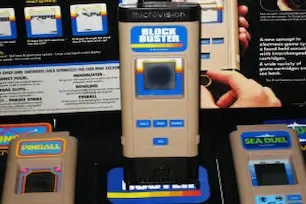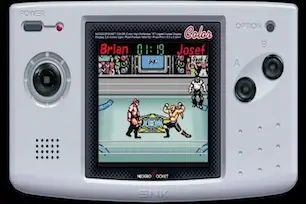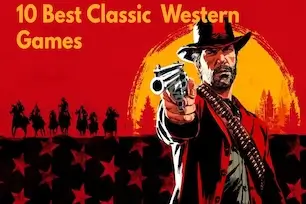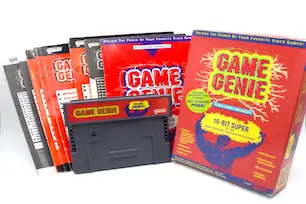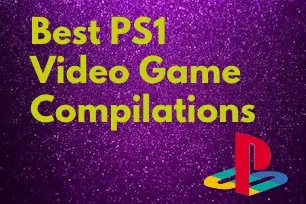The original Pokémon games evoke a powerful sense of nostalgia for longtime fans. But what exactly makes them so timeless? For newcomers, these games offer a chance to explore the roots of a global phenomenon.
So, we’re inviting you aboard the nostalgia train with this curated list of the best retro Pokémon games released on the original Game Boy and GameBoy Color consoles.
Before Pokémon took over the world, Nintendo had already launched legendary franchises like The Legend of Zelda, Super Mario Bros., and Metroid—but none hit quite like Pokémon.
What made it different? Just one year after the games launched, a hit anime series brought the Pokémon world to life and turned Pikachu into a household name.
Pokémon games have appeared on nearly every Nintendo handheld—from the original Game Boy to the Switch. But it all started with a pixelated adventure in Kanto and Johto.
It’s also worth noting that Pokémon games are some of the most counterfeited titles on the secondhand market. Always double-check your copy before you buy a retro cartridge.
Ready to revisit the Johto region or take your first steps in Kanto? Let’s explore the best Pokémon games from the Game Boy and Game Boy Color era.
The Table of Contents
 Why We Still Love the Original Pokémon Games – A 90s Nostalgia Trip
Why We Still Love the Original Pokémon Games – A 90s Nostalgia Trip
1. Pokemon Crystal Version - Game Boy Color
Pokémon Crystal came out in Japan in 2000 and in North America in 2001. It is an improved version of Pokémon Gold and Silver. Many fans think it is one of the best retro Pokemon games in the series.
A major innovation in Pokémon Crystal is the ability to play as a female character. This feature allows players to choose their Trainer's gender for the first time.
Pokémon Crystal improved on the day and night cycle that started in Gold and Silver. It added new events and interactions that vary with the time of day.
In Pokémon Crystal, the story focuses on the legendary Pokémon Suicune. Players can find and catch this rare character as they play through the game. Suicune was part of the standard game along with other legendary pokemon Entei and Raikou.
I thought I remembered catching Celebi in pokemon crystal but was corrected as that was part of an event back in the day.
Pokémon Crystal kept all the favorite features of Gold and Silver. This includes the large Johto and Kanto regions, gym battles, and the option to breed Pokémon. Players could also trade Pokémon with Gold and Silver.
2. Pokémon Red Version - Game Boy
Released in 1996, Pokémon Red is the game that ignited the global Pokémon phenomenon. As the first Pokémon game release, Pokemon Red invites players to start an exciting journey through the Kanto region.
The main objective is to become the Pokémon Champion by defeating the Elite Four and the Pokémon League. Players assume the role of a young trainer starting their journey with one of three original Starter Pokémon: Charmander, Bulbasaur, or Squirtle.
Pokémon Red brought new gameplay features into action. As, it introduced turn-based battles and the idea of catching and training Pokémon.
One of the most notable aspects of Pokémon Red is its ability to connect with its counterpart, Pokémon Blue (and later Green), allowing players to trade Pokémon to complete their collections.
3. Pokémon Silver Version - Game Boy Color
Pokémon Silver, released alongside Pokémon Gold in 1999 in Japan and 2000 in North America. In Pokémon Silver, you play as a young Trainer. Your goal is to become the Pokémon Champion. You do this by challenging gyms and defeating the Elite Four.
In Pokémon Silver, you play as a young Trainer. Your goal is to become the Pokémon Champion. You do this by challenging gyms and defeating the Elite Four.
The game includes many new Pokémon. Some well-known legendary include Lugia and Ho-Oh. It also features the Starter Pokémon: Chikorita, Cyndaquil, and Totodile.
One of the key features of Pokémon Silver is its real-time clock. This clock creates a day and night cycle. This cycle affects which Pokémon you can catch and what events can happen at certain times.
A lot of gamers feel the night day difference makes the game feel more alive. The game motivates you to play at different times to find & catch different Pokémon. Not to mention, certain pokemon will evolve at night and during the day.
The game introduced features like Pokémon friendships and the option to hold items. Another significant aspect of Pokémon Silver is its connection to Pokémon Gold. Players could trade between the two titles to complete their Pokédex. This is where friendships come into play, the higher the friendship level, the lower the cost of stardust it takes to make a trade.
The inclusion of the Kanto region as an unlockable area after defeating the Elite Four allowed players to revisit the original game's nostalgic locations and face familiar challenges.
4. Pokémon Gold Version - Game Boy Color
Released in 1999 in Japan and 2000 in North America. This game introduced players to the Johto region. Pokemon Gold expanded the Pokémon world and gave us fans a bigger & better gameplay experience.
Johto region. Pokemon Gold expanded the Pokémon world and gave us fans a bigger & better gameplay experience.
One of the game’s most important features was its day and night cycle. This cycle changed gameplay by letting certain Pokémon appear only at certain times. This added a fun layer of strategy and realism. We did discuss this with Pokemon Silver, surprisingly as Pokemon Gold & Silver release a the same time.
Another new feature in Pokémon Gold was the breeding system. This allowed players to breed Pokémon and create baby Pokémon with special moves and abilities.
Pokémon Gold kept popular parts from the earlier games, like gym battles and turn-based fighting. It also added new features, such as holding items. For example a pokemon in battle can hold something that it can use in battle to give it an advantage over its opponent
One great feature of Pokémon Gold is that players can go back to the Kanto region. There, they can face off against the original Pokémon Champion, Trainer Red. This feature not only brings back memories for veteran players but also adds important gameplay elements for new ones.
5. Pokémon Blue Version - Game Boy
Pokémon Blue, released alongside Pokémon Red in 1996, is the 2nd pokemon game release in the franchise. While it shares much of its gameplay and storyline with Pokémon Red, it presents a unique experience with different Pokémon available for capture.
the franchise. While it shares much of its gameplay and storyline with Pokémon Red, it presents a unique experience with different Pokémon available for capture.
In Pokémon Blue, players start their adventure as a Pokémon Trainer. Their goal is to become the Champion by fighting battles in the Kanto region. Players begin their journey with one of three classic Starter Pokémon: Charmander, Bulbasaur, or Squirtle.
They will explore different places, face challenges, and develop a strong bond with their Pokémon.
One of the key features of Pokémon Blue is that it has exclusive Pokémon that you can't find in Pokémon Red.
For instance, players can catch certain Pokémon, such as Sandshrew, Sandslash, Bellsprout, Weepinbell, Victreebel, Meowth, Persian, Vulpix, Ninetales, Magmar, and Pinsir. As these pokemon are not available in Pokémon Red but are available to obtain via trade.
6. Pokemon Yellow Version - Special Pikachu Edition - Game Boy
While everyone knows of the Pokémon Red and Blue titles, Pokémon Yellow holds a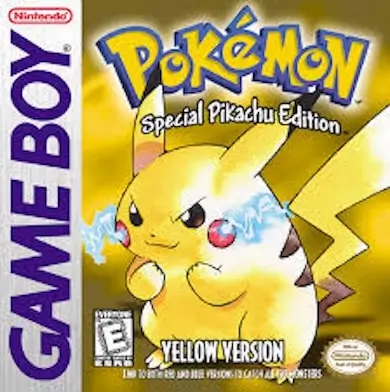 special place for those who are fans of the anime series. The title tells the story of Ash Ketchum, the main character of the Pokémon anime series, and his journeys with Pikachu.
special place for those who are fans of the anime series. The title tells the story of Ash Ketchum, the main character of the Pokémon anime series, and his journeys with Pikachu.
The game was released back in 1998 in Japan and a year later in 1999 in North America. It became a fan favorite along with the titles Red and Blue, which were also released during the same period.
In Pokémon Yellow, Professor Oak gives the main character, Ash, a tough Pokémon. This Pokémon is aggressive and not very popular, so most people did not want it. This is none other than Ash's lifelong partner and loyal companion, Pikachu. From there, your story moves on, and you start your quest to become the best trainer in the whole region.
The game retains the mechanics from the original game, Red and Blue. So, you can catch Pokémon, train them, and evolve them. Along with that, you get the same battle experience as the first titles. This game was developed to appeal to anime fans across the globe.
Final Thoughts - The Retro Wrap Up:
With the popular Nintendo Switch games, it's easy to overlook the earlier games that began it all. It can be a good idea to play these classic games, whether you are revisiting them or trying them for the first time. These games are not only acclaimed to be the best 90s games but also regarded as the best old pokemon games.
We'd love to hear from you! What are your favorite memories from playing the original Pokémon games? Did you have a preferred Starter Pokémon or a memorable battle that stands out to you? Share your stories, experiences, and thoughts in the comments below, or connect with us on social media!
Frequently Asked Questions:
What Pokémon games came out in the 90s?
- In the 1990s, the Pokémon franchise launched with Pokémon Red and Green in Japan (1996), followed by Pokémon Blue and Yellow. In North America, Red and Blue came out in 1998, and Yellow in 1999.
- These titles were all for the original Game Boy.
Was Pokémon released in 1995?
- No, Pokémon was not officially released in 1995. However, Game Freak began development in the early ‘90s, and the Pokémon franchise was trademarked in 1995.
- The first games launched in 1996.
What was the name of the first Pokémon game released in 1996?
- The first Pokémon games released in 1996 were Pokémon Red and Pokémon Green for the Game Boy, exclusive to Japan.
- Pokémon Blue followed later that year as a limited improved version.
What Pokémon games came out in 2000?
- In 2000, Pokémon Gold and Silver were released internationally for the Game Boy Color.
- These introduced the Johto region, the real-time day/night cycle, and over 100 new Pokémon.
Will any of the old Pokémon games be on Switch?
- Yes. With a Nintendo Switch Online subscription, some classic Pokémon games:
- Pokémon Yellow, Red, and Blue—are available via the Game Boy app. However, not all retro titles have been ported.
Are Pokémon emulators illegal?
- Emulators themselves are not illegal. However, downloading or distributing copyrighted ROMs (like Pokémon games) without owning the original is a violation of copyright law.
Can Nintendo sue you for using an emulator?
- Nintendo typically targets the distribution of ROMs and emulators—not individuals using them privately.
- Still, using or sharing copyrighted content without permission can carry legal risk.




